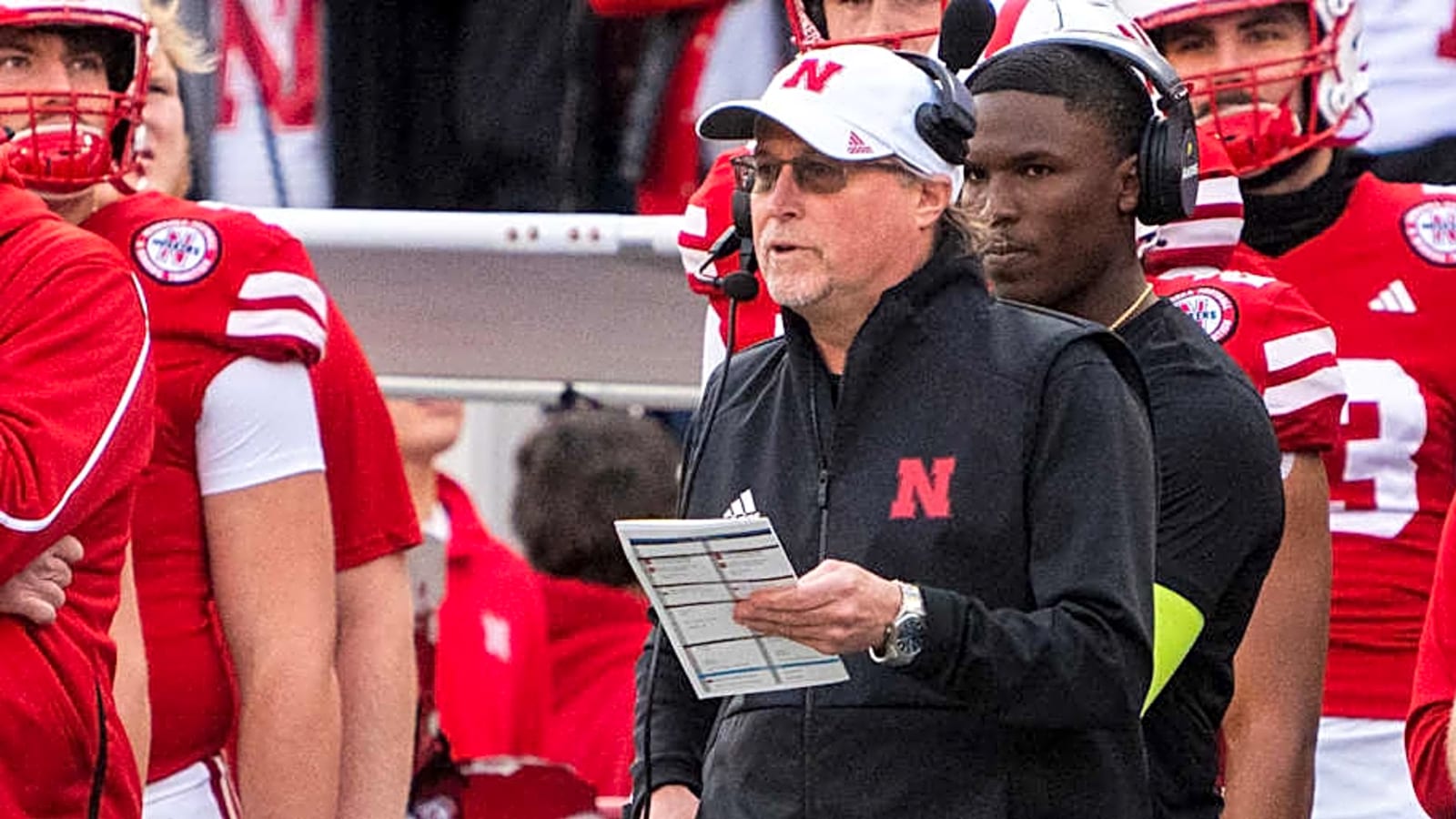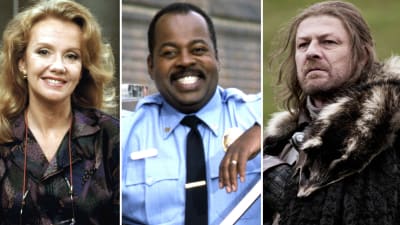
Second of three parts. | Part 1
Husker fans had to have been ecstatic when Dana Holgorsen decided to stick around and signed a two-year contract worth $1.2 million per year in early December to stay in Lincoln as Nebraska football's permanent offensive coordinator.
Holgorsen, who is the sixth Husker offensive coordinator since 2017, has coached some great offenses during his 19 seasons as a head coach or coordinator. His teams have ranked in the top 25 nationally in total offense 14 times and were inside the top 10 eight times. He's had a top-25 scoring team 12 times and cracked the top 10 on seven occasions.
His offenses at Texas Tech (2005-07), Houston (2008-09), Oklahoma State (2010), West Virginia (2011-18) and back at Houston (2019-23) played with tempo and had a penchant for explosive plays. They featured a passing game that stretched the field both horizontally and vertically and were accented by a running game that tried to hit big plays into open gaps.
If there was any initial skepticism from fans about the choice of Holgorsen, it's due in large part to his Air Raid roots. Holgorsen is more than a branch from that coaching tree — he was there for its inception.
The modern Air Raid offense was conceived by Hal Mumme in 1989 at Iowa Wesleyan, an NAIA program located in Mount Pleasant. Along with his offensive coordinator Mike Leach, the two kindred spirits took parts of LaVell Edwards' BYU offensive philosophy and meshed it with simplified concepts from Bill Walsh's West Coast offense and morphed it into their own vision.
In 1990, Dana Holgorsen transferred to Iowa Wesleyan and played wide receiver for the two coaches. After three years with the Tigers, Mumme and Leach left for Valdosta State, a Division II school in Georgia. They hired Holgorsen to coach quarterbacks and receivers, and the rest is history.
In 1996, after three seasons under their tutelage, Holgorsen left to spread his wings as a coach before ultimately reuniting with Leach at Texas Tech when The Pirate was hired as the Red Raiders' head coach in 2000. Holgorsen spent the next eight seasons with Leach in Lubbock — the final three as offensive coordinator — before leaving to join Kevin Sumlin's staff at Houston.
Holgorsen spent the next decade-plus cementing himself as one of the most respected play callers in college football. Respected offensive minds including Kliff Kingsbury, Jake Spavital, Shannon Dawson and Sonny Cumbie are just some of the coaches he's directly influenced.
There's a contingent of Husker fans who long for the days of a ground-and-pound offense. Many consider Bill Callahan's attempt at modernizing the program with his West Coast offense to be a pivotal moment when the program lost its identity.
Some fans have pointed to the parallels at Wisconsin, where Luke Fickell tried to modernize the Badgers' run-heavy offense by hiring Phil Longo to implement his version of the Air Raid. That failed miserably, which lead to Longo's firing last November.
I can understand the consternation from a 30,000-foot perspective, but don't fret, Husker fans. Just because Holgorsen is a Mike Leach disciple doesn't mean this offense will resemble the late coach's pass-heavy system.
Holgorsen has joked in the past that Leach kicked him out of the Air Raid club because he started to run the ball more. Tongue in cheek, sure, but the stats do show Holgorsen evolved and embraced running the ball after he moved on from Leach. Nine of Holgorsen’s last 16 offenses — spanning three different schools — averaged at least 150 rushing yards per game.
A more apt comparison would be Lincoln Riley's USC offense. The two coaches are much more aligned in their current systems with similar route concepts and run-blocking schemes. They won't mirror each other, of course, but they share similar principles.
For those who don't know, Lincoln Riley joined Texas Tech in 2003 as a student assistant working with the offense before becoming a graduate assistant in 2006 and ultimately being promoted to wide receivers coach in 2007. Riley has publicly acknowledged the foundation of his offensive philosophy can be attributed to the years he spent with Holgorsen.
Matt Rhule has talked about how difficult it was to prepare for Holgorsen's offense when the two were head coaches in the Big 12. That shouldn't come as a surprise considering West Virginia scored 38 points on Baylor in 2017 and then dropped 58 on the Bears the following year — the third-most points scored on a Matt Rhule team and one of just five times anyone has eclipsed 50 points against him in 115 games.
So what will it look like in Lincoln?
First off, I like that Holgorsen spent so much time at West Virginia since it's situated in the traditional Big Ten footprint, meaning he has coached in his share of inclement weather and his system was effective in that environment.
Holgorsen has demonstrated a prowess for shaping his offenses around the players he has rather than the other way around. He’s adept at playing to his team’s strengths and taking what a defense gives him.
If you go back and study his Mountaineer offenses — which I did — you see Holgorsen spread the offense out by playing a lot of 10 personnel (one running back, four wide receivers) and reacting to how defenses played it. If teams went small, he would run it between the tackles with the numbers advantage. If teams put more linebackers in the box, he'd use quick passes to the perimeter to get the ball in one-on-one situations in space.
When was the last time Nebraska had an offensive coordinator who had a counterpunch when the defense took away what the Huskers wanted to do? Whether it's been Scott Frost or Marcus Satterfield, Nebraska has lacked identity, fluidity and crispness on offense for far too long. Nebraska's offensive plays didn’t flow from one concept under either of those two.
I've always said there are two types of play callers: There are guys who call plays and there are guys who call an offense. Scott Frost called plays at Nebraska. Dana Holgorsen calls an offense.
During his eight years in Morgantown, Holgorsen's teams averaged 174 yards rushing and finished the 2015 and 2016 seasons averaging 228 yards per game. He showcased the full gamut of run plays — inside zone, outside zone, power, counter — and also featured a really effective delayed draw that often caught defenses off guard.
We won't see nearly as much 10 personnel at Nebraska — 11 personnel (one running back, one tight end, three wide receivers) will be the base formation — but you're going to see a lot of the same passing concepts that have been a staple of Holgorsen's offenses everywhere he's been. You'll see a good amount of tunnel screens, bubble screens, quick outs and stick routes. A lot of these short, high-percentage throws are used as an extension of the running game.
We also know the running backs will be used a lot in the passing game. Emmett Johnson caught 23 passes in four games with Holgorsen last year. Expect to see plenty of wheel routes, swing passes, flat routes and option routes to guys coming out of the backfield — both running backs and wide receivers. Holgorsen also called a handful of fly sweeps with Jacory Barney last season — another staple at previous stops — and that will stay in the arsenal with Barney and Isaiah Mozee likely being used in that capacity.
Holgorsen is a well-known quarterback guru. We've seen guys absolutely thrive under his tutelage at every place he's been — without exception. He's developed an all-conference signal-caller who went on to play in the NFL at every one of his stops: Graham Harrell (Texas Tech), Case Keenum (Houston), Brandon Weeden (Oklahoma State), Geno Smith (West Virginia), Will Grier (West Virginia) and Clayton Tune (Houston). All six still hold multiple school, conference and NCAA passing records, and both Harrell (2008) and Grier (2018) finished fourth in Heisman voting.
Just like he did with those previous QBs, I fully expect — and encourage — Holgorsen to build this offense around Dylan Raiola, who I contend has a higher ceiling than any of his previous pupils.
I can hear some of you now; "Yeah, but wouldn't that mean Nebraska is going to throw the ball an exorbitant amount of time then?" Not necessarily.
When Holgorsen was with Leach at Texas Tech, yeah, those teams threw the ball an average of 52.7 times per game (72%) in the three years he was the offensive coordinator. At Houston, Case Keenum averaged 47.7 passes a game (63%) during Holgorsen's two years there when head coach Kevin Sumlin — another Air Raid aficionado — had final say on the run-pass ratio.
That all changed once Holgorsen was given autonomy over the offense at Oklahoma State. Brandon Weeden, who was first-team All-Big 12, averaged 39.3 passes a game while the Cowboy offense featured a 55-45 pass-run ratio. That season, WR Justin Blackmon was named Big 12 Offensive Player of the Year and running back Kendall Hunter was also a unanimous first-team all-conference selection.
Even when Holgorsen's QBs had their most prolific statistical seasons, his offenses maintained balance. Geno Smith, who was first-team All-Big East, averaged 40.2 passes between 2011-12 in an offense that was 55-45 pass-run during those two years.
Will Grier was second-team All-Big 12 as a senior. He averaged 35.7 passes a game as a two-year starter (2017-18) while the Mountaineers had a 51-49 pass-run ratio during that span. Similarly, Clayton Tune was first-team All-AAC in 2022 and averaged 34.3 passes a game in his three years as the full-time starter (2020-22) while the Cougars had an identical 51-49 pass-run split.
I would like to see Dylan Raiola and Nebraska operate in the same realm as the Brandon Weeden/Geno Smith eras.
I would play with pace and mix in more no-huddle. Not to the point where they're racing to snap the ball every 15 seconds, but I'd like to see the offense quickly get to the line of scrimmage, give a dummy cadence, and then check into a play that Holgorsen likes after seeing the defense. Eventually, I think the coaches should hand the reins to Raiola and allow him to manipulate the pre- and post-snap operation himself.
Matt Rhule has consistently talked about his affinity for a positionless offense and has specifically mentioned wanting to model Nebraska's offense after the San Francisco 49'ers, who are known for their adaptable attack. Under Holgorsen, I'm anticipating that vision coming into focus.
The Huskers have several players who can line up at multiple spots. Heinrich Haarberg, Carter Nelson and Janiran Bonner can line up out wide, in-line or in the backfield. Emmett Johnson and Mekhi Nelson can line up in the slot, and several wideouts can line up in the backfield.
Holgorsen will be able to scheme with personnel and not let on what formation his offense will be in by making it difficult for defensive coordinators to properly identify the typical key indicators that help them sub and match personnel. Holgorsen has always been adept at finding the weak spot in a defense, dictating where the ball will go and getting it into the hands of his playmakers.
I don't think it's a coincidence that Holgorsen's drop-off at Houston coincided with the advent and escalation of NIL and the transfer portal. A head coach's job has changed so much in the last five years. When Holgorsen's responsibilities have been focused solely around game planning and calling plays, he's been one of the best in the country. I'm expecting a huge jump in production on offense.
Tomorrow I'll finish things up by taking a look at the new man in charge of the Blackshirts.
More from Nebraska Cornhuskers on SI
More must-reads:
- Pac-12 continues rebuild with new addition
- Former Patriots great shares concerns about Drake Maye ahead of second season
- The 'First-overall NHL Draft picks' quiz
Breaking News
Trending News
Customize Your Newsletter
 +
+
Get the latest news and rumors, customized to your favorite sports and teams. Emailed daily. Always free!








